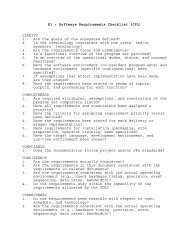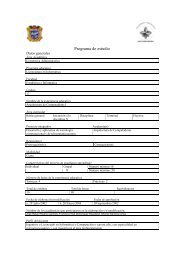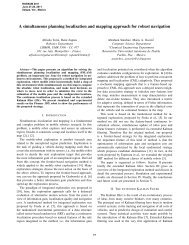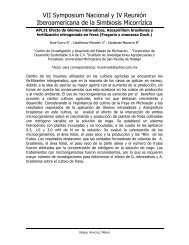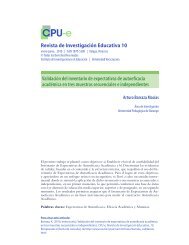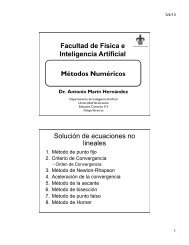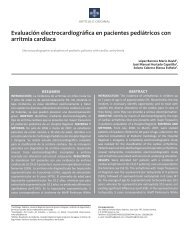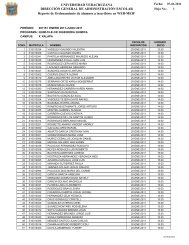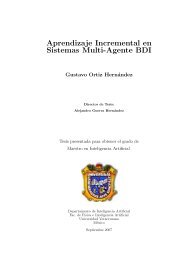Understanding the Software Options
Understanding the Software Options
Understanding the Software Options
Create successful ePaper yourself
Turn your PDF publications into a flip-book with our unique Google optimized e-Paper software.
This new membrane bioreactor cuts<br />
energy costs and boosts throughput<br />
GE Power & Water (Trevose, Penn.; ge.com) has introduced<br />
an improved membrane bioreactor (mbr) technology<br />
whose productivity is said to be 15% higher than that of<br />
its predecessor for wastewater treatment plants. The new<br />
system, called LEAPmbr, was derived from innovations to<br />
GE’s ZeeWeed 500 mbr.<br />
Glenn Vicevic, senior manager, Engineered Systems, says<br />
<strong>the</strong> system has been tested on a commercial scale at three<br />
of its customers’ plants and has demonstrated several improvements<br />
in addition to higher productivity. These include<br />
a 30% reduction in membrane energy costs, a 50%<br />
reduction in membrane aeration equipment and controls,<br />
and a 20% smaller footprint.<br />
The system consists of rectangular cassettes of PVDF<br />
hollow-fiber membranes, immersed in a bioreactor in which<br />
bacteria break down pollutants. A pump draws treated<br />
water through <strong>the</strong> membranes, while solids, bacteria and<br />
colloidal material are retained in <strong>the</strong> tank.<br />
An improved aeration method for cleaning <strong>the</strong> membranes<br />
was <strong>the</strong> key element in lowering energy costs, says<br />
Vicevic. “The conventional wisdom is that <strong>the</strong>re should be a<br />
continuous air scour of <strong>the</strong> membranes,” he says, “but over<br />
<strong>the</strong> last decade, we experimented with bubble-size-diffuser<br />
design and frequency of air release. From that we determined<br />
that large bubbles delivered intermittently was <strong>the</strong><br />
most effective.” He adds that <strong>the</strong> improved productivity<br />
was obtained by optimizing <strong>the</strong> manufacturing techniques,<br />
while <strong>the</strong> smaller footprint was achieved by increasing <strong>the</strong><br />
surface area of <strong>the</strong> membrane.<br />
Silicon passes a test in water-splitting<br />
T he<br />
use of solar energy to split water into hydrogen and<br />
oxygen is an appealing idea, given that sunlight is abundant<br />
in many parts of <strong>the</strong> world, but one of <strong>the</strong> challenges<br />
to its development is to find a suitable electrode material.<br />
Silicon, <strong>the</strong> popular photovoltaic material, seems like a<br />
logical choice, but when it is exposed to O2 it is rapidly oxidized<br />
and fails. Researchers at Stanford University (Stanford,<br />
Calif.; www.stanford.edu) may have a solution.<br />
Using atomic layer deposition, a common process in<br />
semiconductor manufacturing, <strong>the</strong>y have deposited a 2-nm<br />
protective coating of titanium dioxide on silicon electrodes,<br />
followed by a similar, evaporated layer of iridium. TiO2 is<br />
transparent to sunlight and <strong>the</strong> iridium boosts <strong>the</strong> rate of<br />
<strong>the</strong> splitting reaction, says Paul McIntyre, of Stanford’s<br />
Materials Science and Engineering Dept. In laboratory<br />
tests <strong>the</strong> coated electrodes have shown stable operation for<br />
more than 24 h, without apparent corrosion or loss of efficiency,<br />
he says, while uncoated electrodes corroded and<br />
failed in less than 30 min.<br />
Next, <strong>the</strong> researchers plan to scale up <strong>the</strong> process and<br />
test o<strong>the</strong>r semiconductor materials. The ultimate goal, says<br />
McIntyre, is <strong>the</strong> development of a commercial process in<br />
which H2 and O2 would be stored and used to generate<br />
electricity when <strong>the</strong> sun doesn’t shine. ■<br />
A01039EN<br />
Not Mozart, Yet a<br />
Classical Genius<br />
Just like Mozart‘s compositions<br />
SAMSON‘s Series 240 Valves are<br />
world renowned and appreciated.<br />
Tuned like organ pipes, <strong>the</strong> Series 240<br />
suits all pressures and flows, from adagio<br />
to allegro. Yet, <strong>the</strong> valves definitely<br />
work piano so nobody will be roused<br />
by a sudden beat of <strong>the</strong> drum. And, just<br />
like in an orchestra, <strong>the</strong> number of instruments<br />
is your choice. With positioners,<br />
solenoid valves and limit switches,<br />
fur<strong>the</strong>r virtuoso performers are waiting<br />
to come in.<br />
We supply <strong>the</strong> instruments,<br />
you be <strong>the</strong> conductor.<br />
SAMSON AG � MESS- UND REGELTECHNIK<br />
Weismüllerstraße 3<br />
60314 Frankfurt am Main � Germany<br />
Phone: +49 69 4009-0 � Fax: +49 69 4009-1507<br />
E-mail: samson@samson.de � www.samson.de<br />
Circle 24 on p. 54 or go to adlinks.che.com/35068-24



